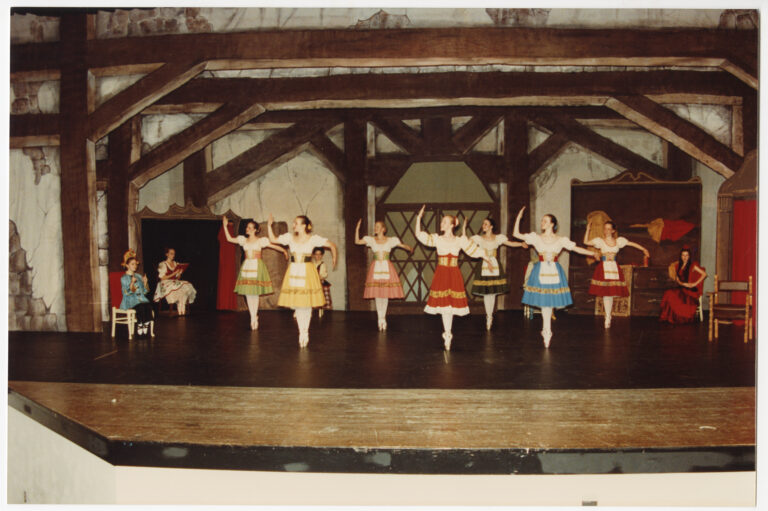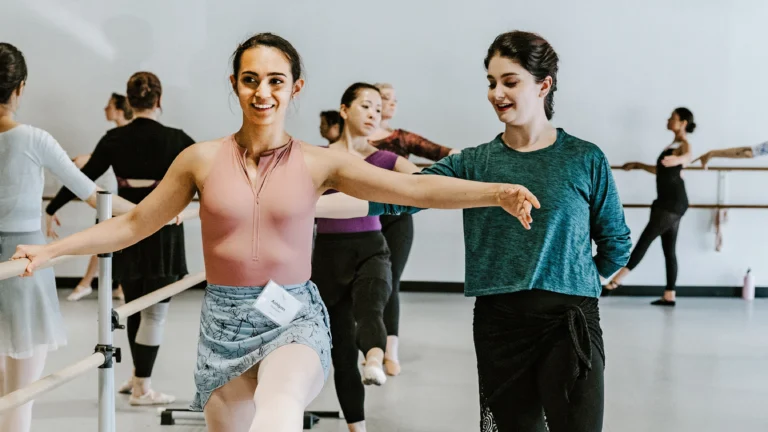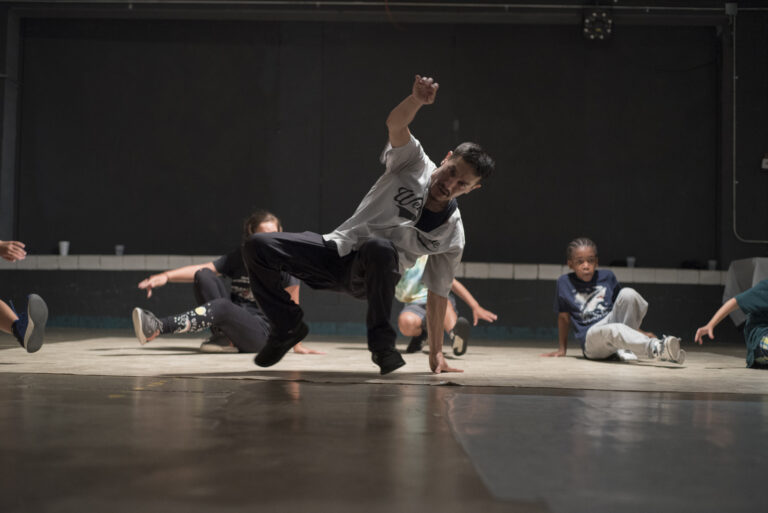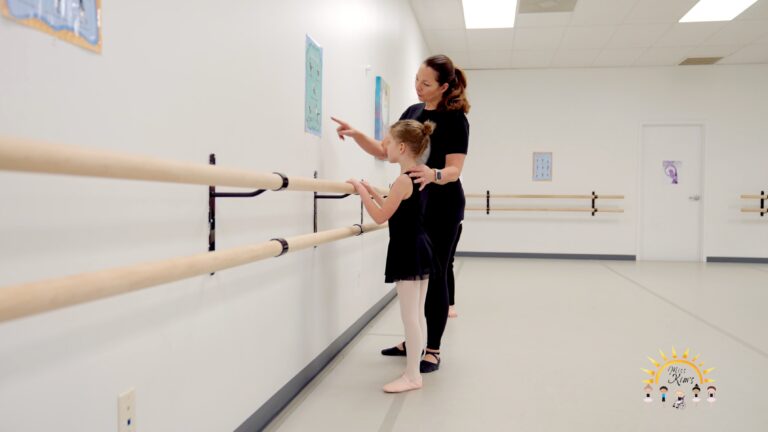
Silicon Valley Ballet announced in February 2016 that the company would close and file for bankruptcy. The closure included the school—and $250,000 in tuition money for the current school year and summer program was lost in the bankruptcy.
But the collapse could not take down Dalia Rawson, the school director. A survivor who had weathered the company’s financial upheaval for years—and her own life-threatening illness—the bankruptcy didn’t stop her.
Just two weeks after Silicon Valley Ballet closed, she incorporated a brand-new entity, New Ballet. What started as an effort to offer classes to the school’s 250 students through the term they had already paid for turned into a fresh start for a school freed from a troubled company.
But it would take another four years for the school to fully emerge from the tumult of its past, marked at the end of February with a ribbon cutting on the school’s new home.
“It’s been a long journey to get here, and there were many moments when I wondered if it would happen,” says Rawson, even as she faces a new challenge of temporary closure due to COVID-19 and the shelter-in-place order in her county. “I’m grateful for all the lessons that put us in a strong position.”
Weathering Many Storms
Silicon Valley Ballet was the last iteration of what started as Cleveland Ballet in 1972. Cleveland Ballet adopted an unusual two-city model in 1985 and became San Jose Cleveland Ballet, though the dancers remained based in Cleveland. Rawson joined the company as a dancer in 1991.
She says the company always seemed to struggle financially, but it was still a shock when, in 2000, the Cleveland arm abruptly folded two weeks into the season. The company continued on a smaller scale as Ballet San Jose, and later, after 2012, Ballet San Jose Silicon Valley.
Shortly after the company settled in San Jose, Rawson began teaching at the company’s school, primarily because the cost of living in San Jose was so much higher than Cleveland. “I was hoping to save to buy a condo someday,” Rawson says, joking. “But then I fell in love with teaching.”
She continued to perform and teach until 2006, when she developed intense back pain and fatigue. She thought it was the stress of Nutcracker season, but she was soon diagnosed with stage four Hodgkin lymphoma. She underwent months of chemotherapy and radiation, followed by a bone-marrow transplant with an experimental treatment using what are called cytokine-induced killer cells, which only a few people had received before her. She eventually made a full recovery, but it ended her 15-year performing career.
“I was 31. I couldn’t come back after the treatment and expect to be at the level I was at,” Rawson says. “I put all my energy into teaching.”
Taking the Reins
In 2012, the company ousted its founding artistic director Dennis Nahat, in a move to partner with American Ballet Theatre. ABT principal José Manuel Carreño later took the helm. Many of Rawson’s longtime colleagues also left the organization, including the school director. Rawson was offered the position.
She rose to the challenge. In her first year, she doubled the school’s budget from $500,000 to $1 million in revenue through a variety of changes: She raised tuition to parity with other area schools, grew the summer session and added new programs for younger dancers. “That first year was total madness, but it was wonderful,” says Rawson.
Her appointment as director was conditional on her implementing the American Ballet Theatre National Training Curriculum, something she wasn’t familiar with. She traveled to New York City to meet with the ABT curriculum directors to see if it was a fit. They agreed to work with her, and she led the transition of the San Jose faculty to ABT certification and established the school as an ABT satellite.
Rawson says that the new curriculum was a factor in the first-year budget growth, because it helped justify the general tuition hike. It also increased enrollment of advanced students, who pay higher tuition for intensive training. “I instantly connected with the curriculum, on a pedagogy level and as a business model,” she says. “It has a place for students of every ability, which allows us to train as many kids as possible.”
As the school prospered, the professional company teetered on the brink of closure. Elizabeth Gummere was one of the consultants brought in to assess the company’s finances. But Gummere saw a bright spot. “The school was doing brilliantly,” she says. “I thought, ‘If there was any way the school could be on its own, that would be great.'”
Starting Fresh
The closing of the company was devastating for Rawson. She grew up in San Jose watching the company, and that inspired her to one day join. But what upset her most was that school families lost $250,000 in tuition money in the bankruptcy.
“It broke my heart,” Rawson says. “I had to find a way to do something, or I couldn’t live with myself.”
She set out to incorporate as a new entity that could continue to offer classes, at least through the time parents had already paid for. Sleepless nights of reading legal books and talking to lawyer friends followed, and within two weeks she incorporated New Ballet.
The community rallied around her. Gummere filed for the incorporation with her and joined the new board. Ten faculty and staff volunteered their time for the first few weeks of classes. Those who could volunteered longer, and some took a smaller paycheck for a bridge period. Rawson volunteered for months.
Elizabeth Hutter, now the principal of New Ballet, was on faculty at the time of the bankruptcy. She says she didn’t flinch when Rawson told her of the closure. “I told her, ‘As long as my door code works, I’ll keep coming,” says Hutter, who showed up the day after the news to teach as usual, as did many others. “I’ve never seen that kind of groundswell in an organization to do the right thing.”
Hutter says that while not all the teachers and pianists were in the position to volunteer, there were enough not to cancel any classes, even if some were combined and used recorded music.
The effort wasn’t lost on the school’s families. Bill Perry had two kids in the school at the time and later joined New Ballet’s board.
“It felt scary when the bankruptcy happened. There wasn’t another school in the area I was excited about for my kids,” says Perry. “But Dalia was quick to respond. We saw it was going to be all right.”
Rawson and the new board set out to raise funds to sustain operations until new tuition money started coming in for the summer program and the next year. But raising money during the first few months was risky. New Ballet was incorporated, but 501(c)3 tax-exempt status took another four months. “I had to tell any potential donors that whatever money they donate may not qualify for not-for-profit tax benefits should the application be denied,” she says.
But donors had faith in her. The school raised more than $117,000 before the nonprofit status came in June.
Hutter says she never doubted Rawson. “I had seen over and over that if she put her mind to something, it was going to happen,” she says. “So, I and others hung in. We didn’t know how it would evolve, but we knew it would be something great.”
The Search for a New Home
The school continued on in the same building it had always shared with the company. But the landlord quickly informed Rawson they intended to sell. While they offered her affordable rent and said they’d give her time for a search, she’d have to face the daunting Silicon Valley real estate market.
It seemed too good to be true when SVCREATES, a nonprofit that promotes the arts in the area, offered to include New Ballet in an arts campus it was developing, but that fell through after months of planning.
She looked with brokers and on her own to find the right space downtown. With few options, she considered moving the school to the suburbs.
“I didn’t want to lose the ballet as part of the grit and fabric of downtown culture after all these years,” she says. “But it looked like it was going to have to happen.”
Six months later (their landlord agreed not to sell until they found a new space, but had an interested buyer by this time), they found something that looked promising. It was an athletic club space in a large event hall downtown. It needed minimal renovation, and the landlord was motivated to rent to New Ballet because a ballet school fit the same zoning requirements as the athletic club.
“It was like, ‘Wow, how did this fall in our laps?'” says Perry, who helped Rawson with the search.
Rawson made the deal, giving New Ballet a home of its own and the stability that eluded it for so long.
The school has 350 year-round students and a 14-member studio company, and it now has enough performances per year to offer a subscription series to San Jose audiences who haven’t had that since the company closed. In May, the board approved a plan for a full professional company for the 2020–21 season, with Rawson named artistic and executive director of New Ballet.
Rawson never imagined she’d be in charge of the remains of what was once San Jose Cleveland Ballet. She credits Nahat, the organization’s founder, for her success handling big challenges. “After cancer, it felt like I wasn’t scared of anything. I should just go for it,” she says. “And then I understood what Dennis had always told me: ‘Don’t ever say no. Keep working until you’re the last one standing.'”




